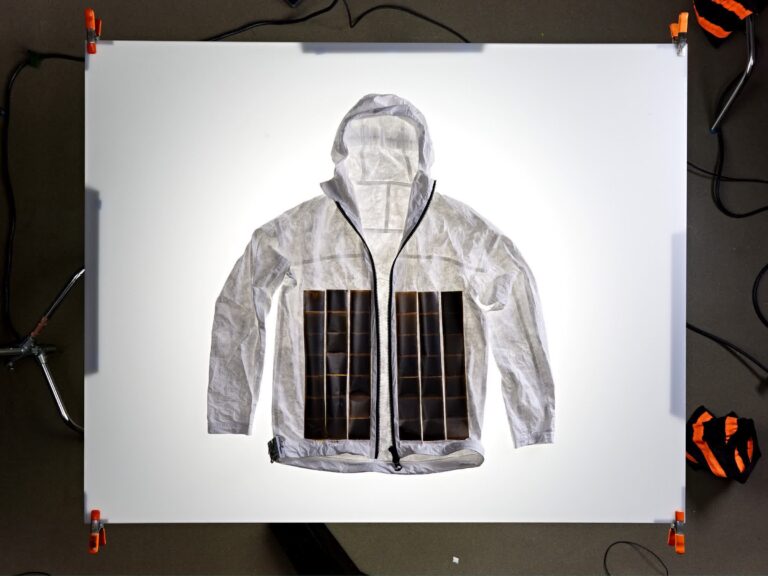
[ad_1]
The bleeding edge: A UK clothing company called Vollebak thinks it has taken the first step toward creating an “invisibility cloak.” Working with a professor from the University of Manchester (UoM) and the National Graphene Center, Vollebak has created a jacket that can trick a thermal camera by changing the amount of thermal radiation the garment emits.
Vollebak embedded the coat with 42 panels of graphene, a highly conductive material that some companies, like Samsung, believe can provide longer-lasting and faster-charging batteries. In fact, Professor Coskun Kocabas of UoM says the material works much like a lithium-ion battery.
“We have a multilayer graphene coating on the surface, and we intercollate ions between the graphene layers, similar to a lithium-ion battery,” Kocabas told Wired.

Graphene is an absorbing material in its normal state, but as it becomes charged with electrons, it turns reflective. The patches comprise over 100 layers of graphene with a liquid suspended within that acts as a transfer medium. When a voltage is passed through the patch, the graphene collects electrons from the charged ions in the fluid. Essentially, a computer can turn each patch off or on relative to how thermal imaging sees it.
However, small changes to the voltage can result in varying degrees of thermal radiation. This nature allows it to fluctuate the amount of thermal energy it radiates. So theoretically, if a computer can scan whatever is behind the graphene, it can produce the proper voltage to reproduce the background radiation rendering the garment invisible without changing the actual temperature of the jacket.
“The critical thing is it does it with no change of temperature on the jacket itself,” Vollebak cofounder Steve Tidball explained. “It’s just the thermal radiation that changes.”
However, this technology is a very long way from an actual visible-light cloaking device. For one thing, tricking infrared sensors is much easier than trying to nullify visible light because of the sheer amount of wavelengths that must be computed and rendered.
Secondly, the graphene patches are about five centimeters square. Not only does that make the material stiff and somewhat uncomfortable to wear, but the seams between panels are also easily visible. For the garment to be practical, it must be closer to a flexible cloth-like textile, meaning a considerable amount of miniaturization is in order.
To this end, there has been some progress toward making graphene more malleable. For instance, MIT researchers have developed a process to create two-dimensional sheets of graphene less than a billionth of a centimeter thick. Theoretically, it might be possible to use large sheets as layers between other textiles, in much the same way Gore-Tex is used for waterproofing.
The prototype is also tethered to a computer. This obstacle might be easier to tackle, considering the phones in our pockets are likely quite capable of handling any processing the graphene garment would have to perform. A simple wireless connection to any phone with a companion app would probably do the job.

However, this is all assuming that cloaking visible light is even possible. In 2016, researchers at the University of Texas, Austin, determined that the fundamental laws of physics prevent rendering electromagnetic waves completely invisible. The study showed that as the color-span bandwidth increases, scattering reduction also increases.
More recent research claims “quantum” sheets that bend the visible and invisible spectrum around objects are possible — quite literally a “broadband invisibility cloak.” Prototypes have been demonstrated for military applications, but little more has come out since it was unveiled in 2019.
Tidball and Kocabas are realistic about their invention, calling it a “proof of concept” rather than a prototype. They realize the obstacles they face and how far they have to go but are still optimistic that something passing for invisibility could be seen in the next five to 10 years.
“Ultimately, you’re still a good five or 10 years away from actual invisibility,” Tidball says. “This is just a step on the journey to trick infrared cameras.”
[ad_2]